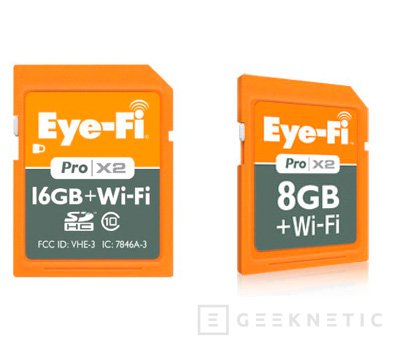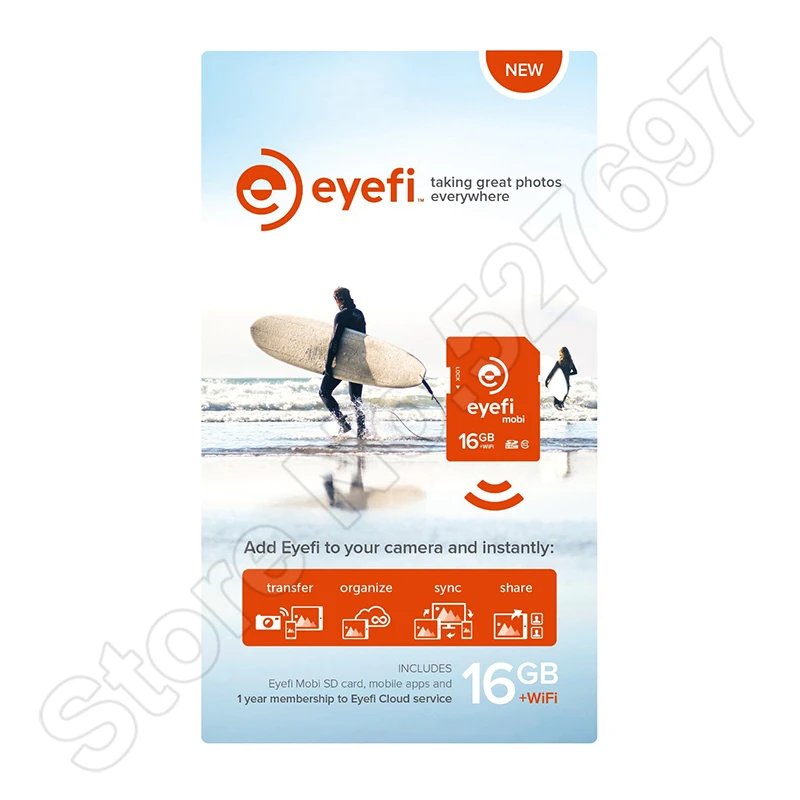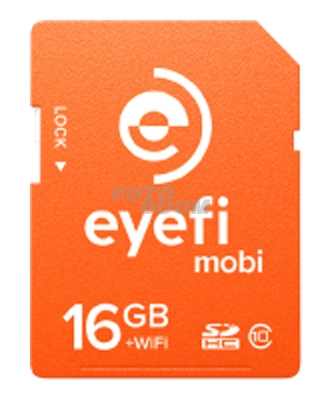

#EYE FI 16GB FULL#
The Eye-Fi Center program, which is compatible with the Pro X2, has several advanced options and a full menu interface, including geotagging and transfer mode options. While it's easier to setup a Mobi card than the Pro X2, it lacks the ability to work with the Eye-Fi Center program on a computer, which is the third main difference between the two cards. Once a computer is connected, images will automatically start uploading to a designated folder. The Mobi can upload JPEGs and videos to a computer, but there is no real interface aside from a small task bar menu. As I began shooting, the JPEGs I captured began uploading to the gallery in the Eye-Fi application, which were subsequently saved to the camera roll on my device.Ī look at a JPEG uploading to the gallery in the Eye-Fi iPad application.Ī look at the option menu in the Eye-Fi iPad application. Then I joined the Mobi's wireless network on the mobile device and opened up the Eye-Fi application.

I disabled the Auto Power Off feature on the Mark III because the Eye-Fi Mobi gets its power from the camera's battery, and auto sleep disrupts the Wi-Fi connection. Then I placed the Mobi card in my Mark III, and enabled Wi-Fi transmission in the Mark III's menu.
#EYE FI 16GB FOR ANDROID#
I had no trouble connecting to an iPad or iPhone with the Mobi after following the necessary steps.įirst I had to download the Eye-Fi application for my phone from Apple's App Store (also available for Android on Google Play). In fact, the connection setup is easier with the Mobi card than it is with the Pro X2. The Eye-Fi Mobi connects to a mobile device or computer strictly via its own wireless network. This was even less of a loss, since I only used the Eye-Fi Pro X2's own wireless network to connect the camera directly to my iPhone, iPad or MacBook Pro. This means the Pro X2 card could connect to my home wireless cable connection and use that as a route to my computer for uploading images. The Mobi can connect to backwards compatible 802.11n networks. In fact, the Pro X2 is the only card that can fully utilize 802.11n. The other feature the Mobi lacks is the ability to connect to a home or office (third party), or Ad Hoc Wi-Fi connection to upload images to a computer like the Pro X2. For photographers who need the versatility of wireless Raw and JPEG upload capability, the Mobi will not be suitable. Low resolution JPEGs were nice and quick with the Pro X2, so this was not a major loss. In my experience, I never really uploaded Raw images from the Pro X2 because it took such a long time, and I only needed large screen previews for my clients. Both cards support a variety of video files, and the Mobi can read and write many files, including Raw. The Pro X2 card can upload Raw files from the card, while the Mobi is limited strictly to JPEG files.


Where the cards differ is in the handling of Raw files. So, speed and performance on these cards should be about the same. They both offer Class 10 SDHC performance and feature ranges of 90 feet (27.4m) outdoors and 45 feet (13.7m) indoors. Glancing at this list, it's easy to see that the Eye-Fi Mobi and Pro X2 share a lot of similarities. Power: Advanced power management optimizes use of camera battery.
#EYE FI 16GB PLUS#
#EYE FI 16GB PROFESSIONAL#
From $44.99 / £33 (8GB) | Wi-Fi SD cards have become an essential tool for many professional photographers, and now Eye-Fi is reaching out to hobbyists and novices with the Eye-Fi Mobi SD card.


 0 kommentar(er)
0 kommentar(er)
